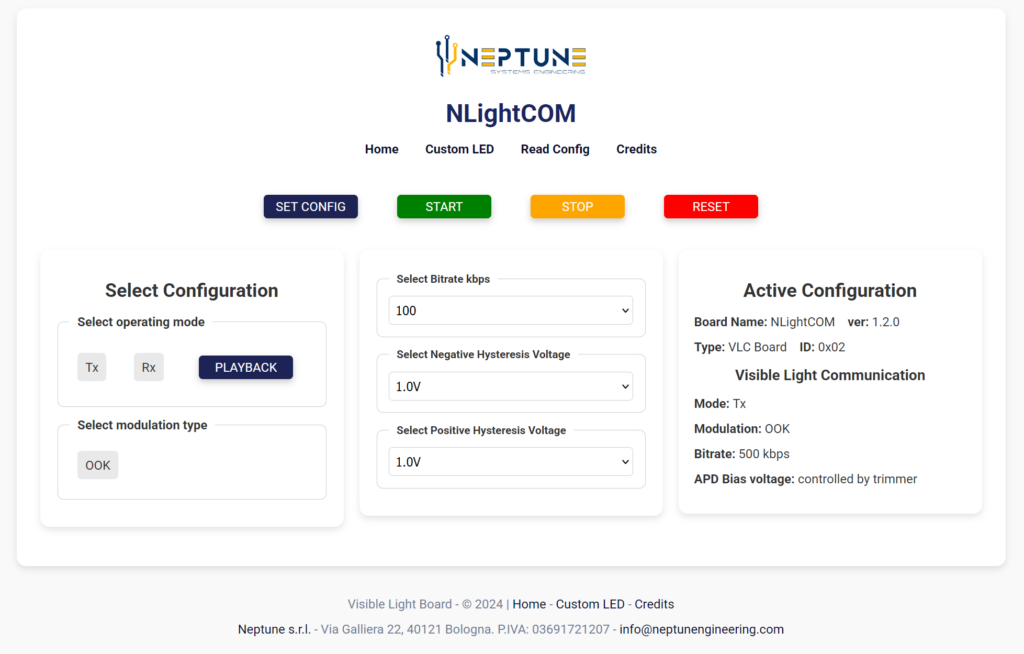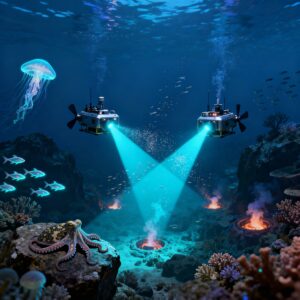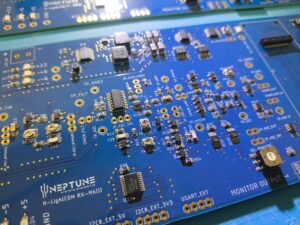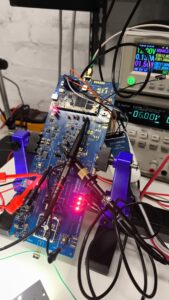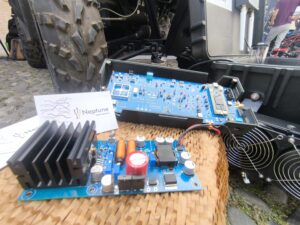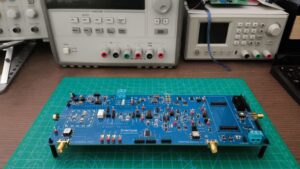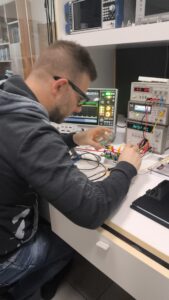NLightCOM
Visible Light Communication System
Optical Commnication
Current Regulation
Advanced Diagnostics
Rapid Configuration
Industrial Reliability
NLightCOM Board
Visible Light Communication (VLC) is a wireless data transmission technology that uses visible light from LEDs to transmit information. It offers high-speed, secure, and interference-free communication, ideal for environments where radio frequencies are limited or restricted — such as hospitals, underwater systems, and smart lighting networks.
NLightCOM delivers a compact VLC transceiver platform that synchronizes high-efficiency LED transmitters with sensitive photodiode receivers to achieve reliable optical data links in challenging environments. The modular stack combines a rugged power front-end, programmable current shaping, low-noise transimpedance amplification, and digital supervision so that both the emission and detection stages remain perfectly aligned over time.


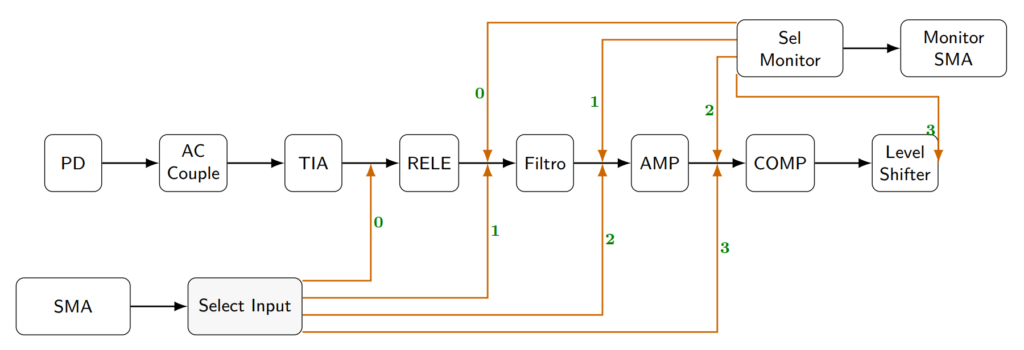
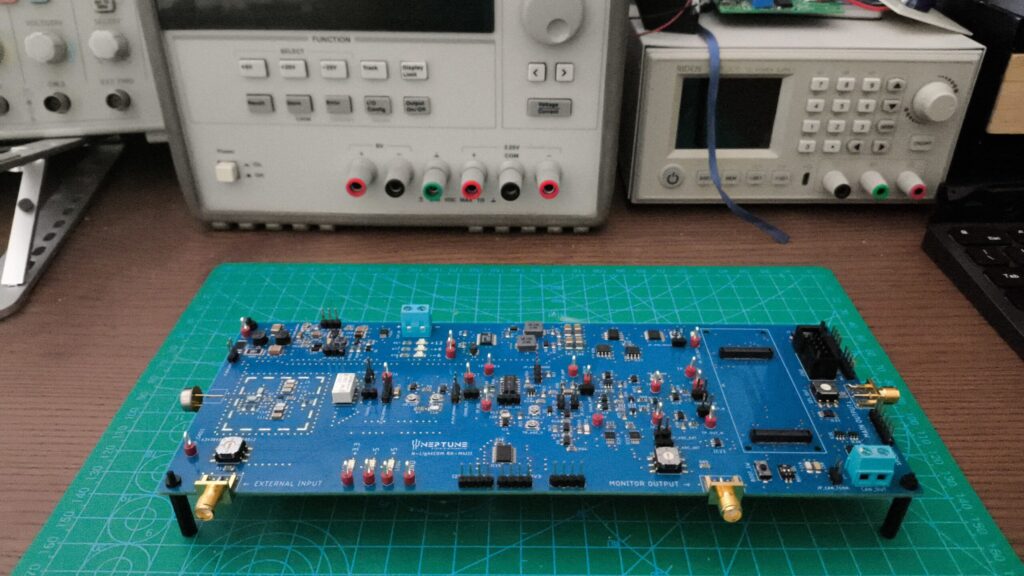
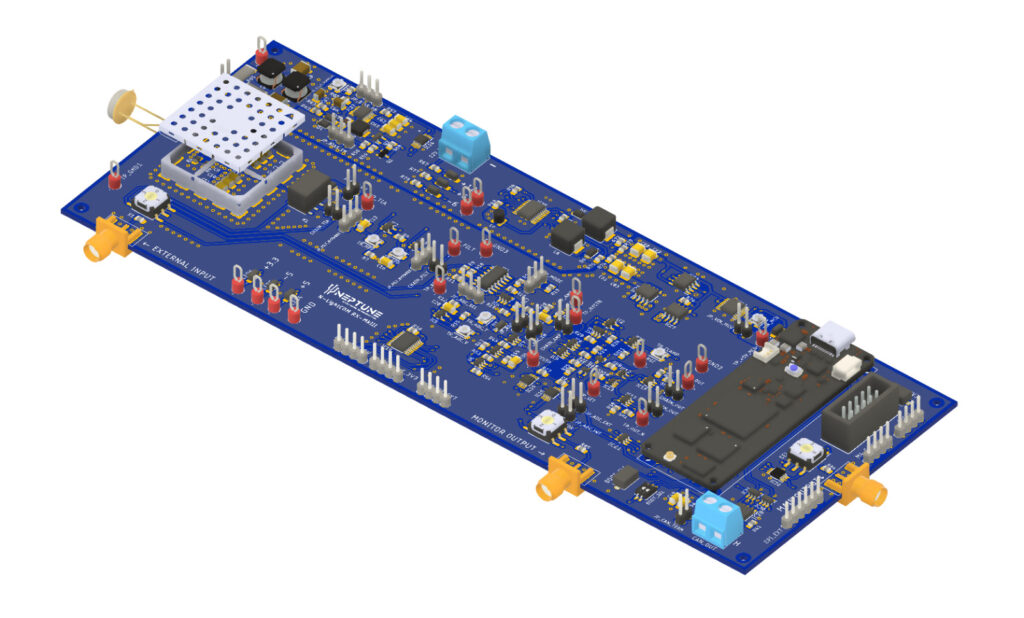
Hardware Specification:
Active area ≥ 10 mm². The board uses a photodiode that meets the MT03-28 specifications.
Reverse bias voltage adjustable from 5 to 71 V
The board provides a TIA gain of 90 dB plus an amplifier gain of –20 / +20 dB, for a total gain between 70 and 110 dB.
Adjustable threshold and hysteresis.
N-LightCOM implements adjustable HystPos and HystNeg control via digital potentiometers, configurable from the control panel.
Selectable via software, with connection through a dedicated SMA port.
Real-time LED driving capability.
The N-LightCOM output provides a drive signal on an SMA connector terminated at 50 Ω.
Used for signal transmission or analysis (MOD/DEMOD compatible).
Current driver with bandwidth ≥ 500 kHz.
On N-LightCOM, the LED drive frequency ranges from 20 kHz to 1 MHz.
Support for OOK-Manchester modulation and demodulation.
On N-LightCOM, OOK modulation and demodulation can be configured through the control panel, supporting bitrates from 10 Kbps to 500 Kbps.
The N-LightCOM board supports multiple interfaces for communication, configuration, and firmware management.
Serial communication interface.
On N-LightCOM, serial communication is handled on channel 1 by the M4 core.
Data and programming interface.
Provides USB connection to the Portenta board for programming the H7 core and handling debug messages.
Wireless connection interface.
The board includes a web server with configuration stored on the SD card, enabling activation of the control panel.
Industrial communication bus.
N-LightCOM includes an integrated CAN driver.
Interface for communication with sensors or peripherals.
Supports I2C_0 channel for connecting sensors, displays, and other devices.
Used for control and configuration.
Implemented using HTML, CSS, and JavaScript.
Dedicated port for firmware updates and debugging.
Access through ST-LINK programmer (external module required).
Arm Cortex-H7 Microcontroller
The NLightCOM stack relies on the STM32H747 at the heart of the Arduino Portenta H7. Its dual-core Arm Cortex-H7 architecture splits responsibilities: the Cortex-M7 firmware initializes power rails, mounts the microSD card to parse `config.json`, serves the Wi-Fi web interface, and prepares VLC payloads. The Cortex-M4 firmware runs the model based generated state machines and modulation routines that drive the VLC hardware in real time.

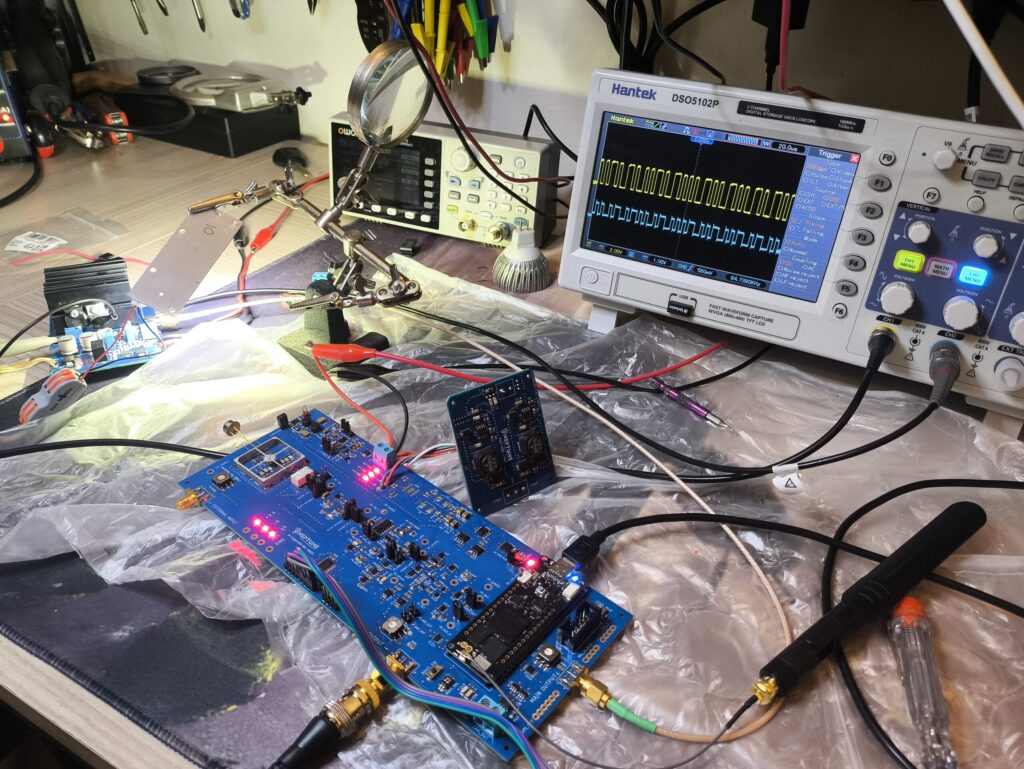
Configuration Profiles
NLightCOM ships with a microSD layout that separates the active from a library of standby profiles.
Each profile encodes both networking and VLC behavior, allowing rapid adaptation without firmware changes.
Replacing the active profile is as simple as copying one of the `Configuration_XX/config.json` files into `/Configuration/` on the SD card or pushing a new JSON payload through `/SET_Config`. The M7 core validates the payload, updates the shared structure, and programs the digipots so the selected mode becomes effective immediately after the write completes.
WiFi Mode
NLightCOM WiFi can be configured in two different ways:
AP mode – generates a standalone access point accessible via SSID and password set in the configuration.
CLIENT mode – uses the credentials and access parameters for an existing WiFi network, useful for laboratory operation.
Integrated Web Interface
The embedded web interface provides a streamlined dashboard to configure NLightCOM in both Access Point and Client modes. It exposes secure controls for network setup, VLC modulation parameters, real-time diagnostics, and MCU management, enabling rapid commissioning without serial tools.
Software Interface
The N-LightCOM board can be configured and controlled through software as well as via the web interface.
Supported programming environments include Python, C/C++, MATLAB/Simulink, and HTML.
The configuration and management of operational commands can be performed directly through these software tools.
Custom control panels can be developed in different programming languages using a set of API commands communicated over Wi-Fi.
Project Information
This project, NLightCOM, is developed and maintained by Neptune s.r.l..
System for the generation and decoding of custom VLC signals for vehicular communication testing
The board was purchased by INO-CNR as part of the project: National Recovery and Resilience Plan (PNRR), Mission: 4, Component: 2, Investment: 1.4, Call 3138/2021, Project: MOST, Code: CN00000023, CUP: B43C22000440001.
The customization of the board’s characteristics has been commissioned by the National Institute of Optics of CNR (Istituto Nazionale di Ottica del CNR), with Dr. Jacopo Catani.
Development Team
- Project Manager: Mirabella Mirko
- Developpers: Donnini Leonardo, Gilli Ivan, Mirabella Mirko

